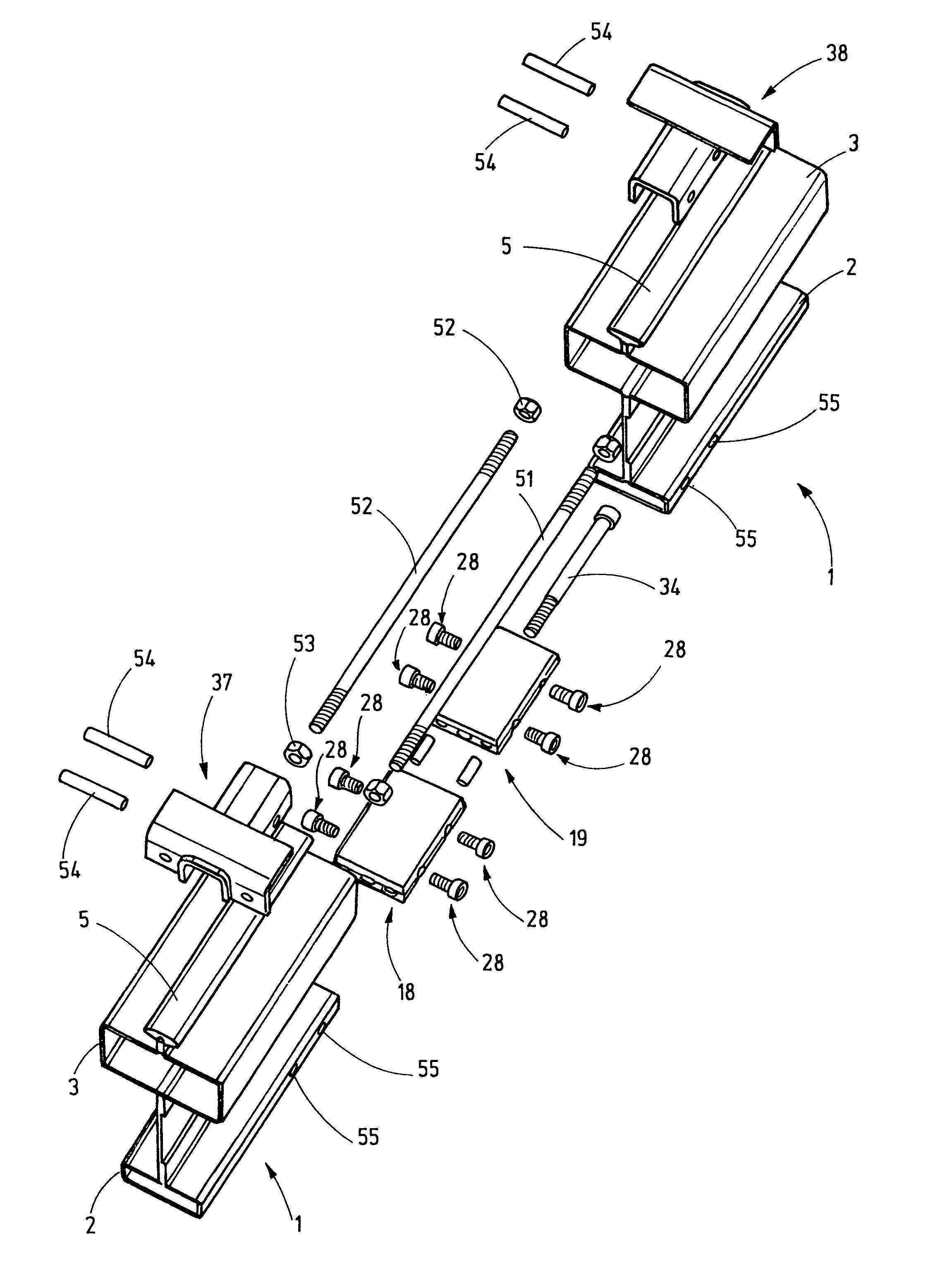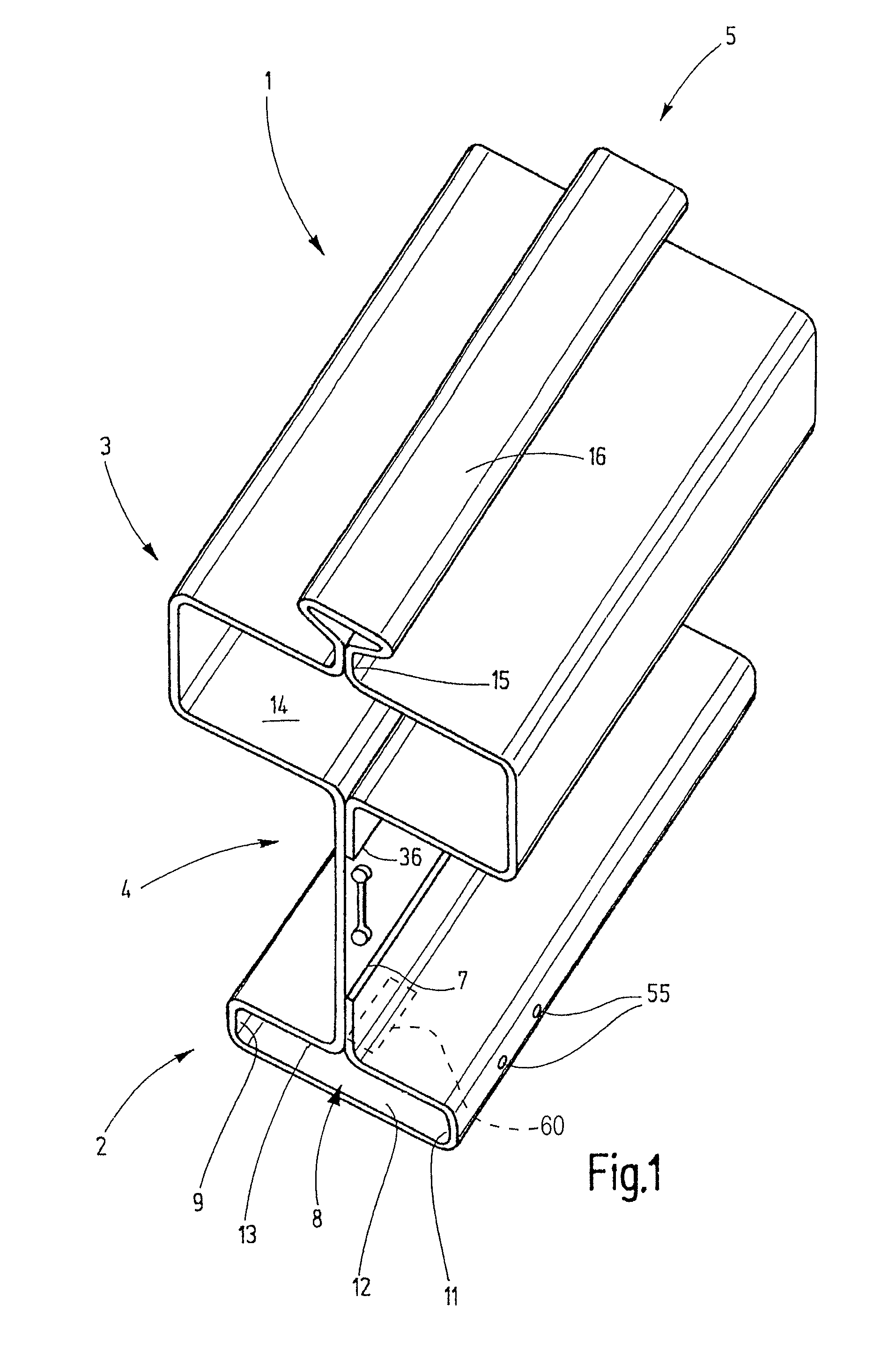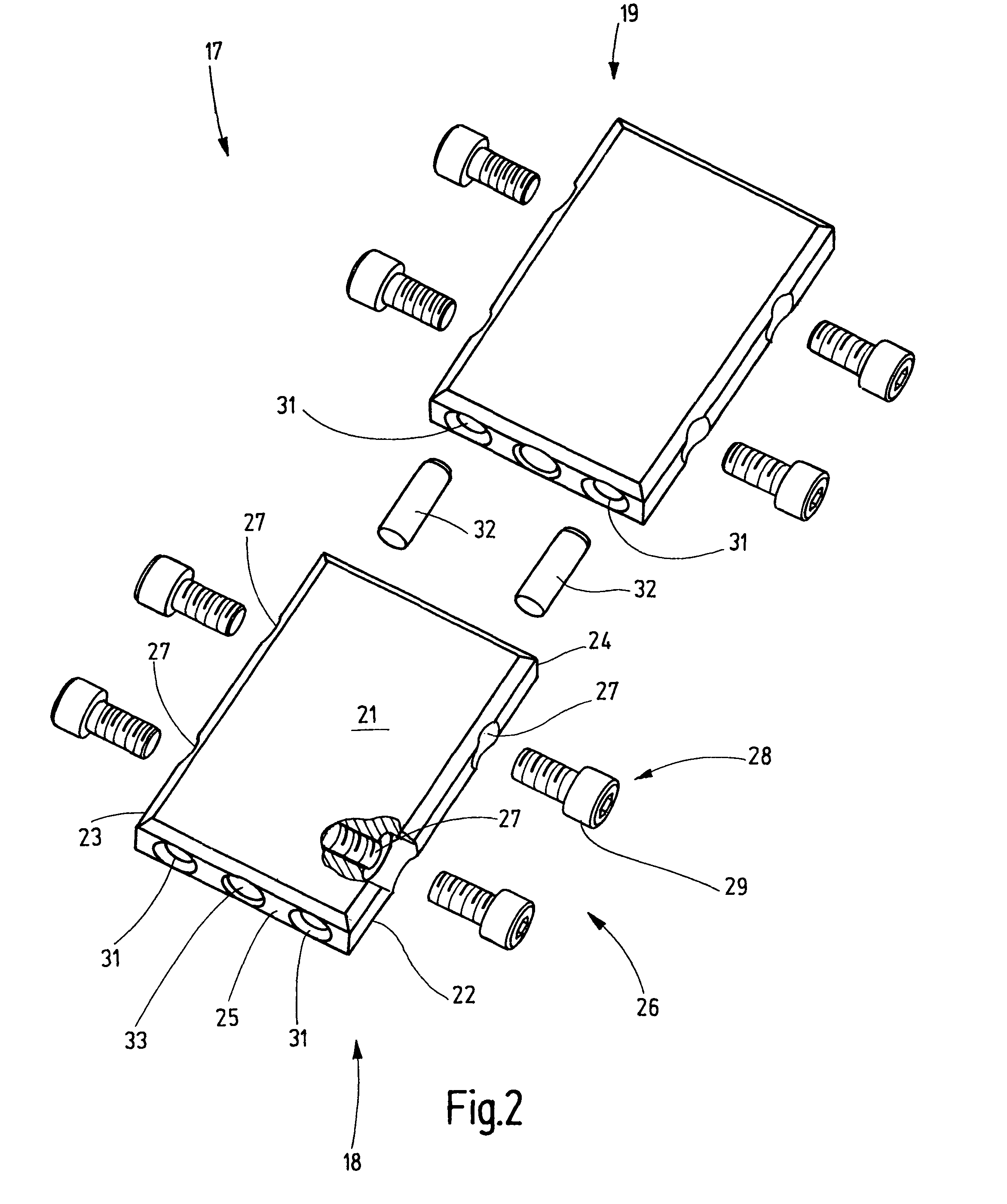Railway joint connection arrangement
a rail and connection arrangement technology, applied in the direction of runways, rope railways, roads, etc., can solve the problems of not allowing sufficient lateral centering, no biasing force could be generated in the lower flange, and undesired lateral offset of the rails, etc., to achieve effective arrangement
- Summary
- Abstract
- Description
- Claims
- Application Information
AI Technical Summary
Benefits of technology
Problems solved by technology
Method used
Image
Examples
Embodiment Construction
[0028]Referring now more particularly to FIG. 1 of the drawings, there is shown an illustrative running rail 1 for an overhead conveyor. The running rail 1 has a lower flange 2 and an upper flange 3. The upper and lower flanges 2, 3 are connected to each other by a web 4. On the top side of the upper flange 3, there is a support rib 5. The web 4 lies in the vertical plane of symmetry.
[0029]The entire running rail 1 has a constant cross section that is continuous over the length and made from a roll-formed steel plate whose edges 6, 7 are laser-welded to the web 4. As a result of the roll-formed profile, the lower flange 2 is formed as a hollow chamber that defines a hollow space 8 that is rectangular in cross section. The hollow space 8 is bounded by two narrow sides 9, 11 of the lower flange 2, a bottom side 12, and a top side 13 from the center of which the web 4 projects. The upper flange 3 is similarly constructed as a hollow chamber which defines a hollow space, also with a rec...
PUM
 Login to View More
Login to View More Abstract
Description
Claims
Application Information
 Login to View More
Login to View More - R&D
- Intellectual Property
- Life Sciences
- Materials
- Tech Scout
- Unparalleled Data Quality
- Higher Quality Content
- 60% Fewer Hallucinations
Browse by: Latest US Patents, China's latest patents, Technical Efficacy Thesaurus, Application Domain, Technology Topic, Popular Technical Reports.
© 2025 PatSnap. All rights reserved.Legal|Privacy policy|Modern Slavery Act Transparency Statement|Sitemap|About US| Contact US: help@patsnap.com



